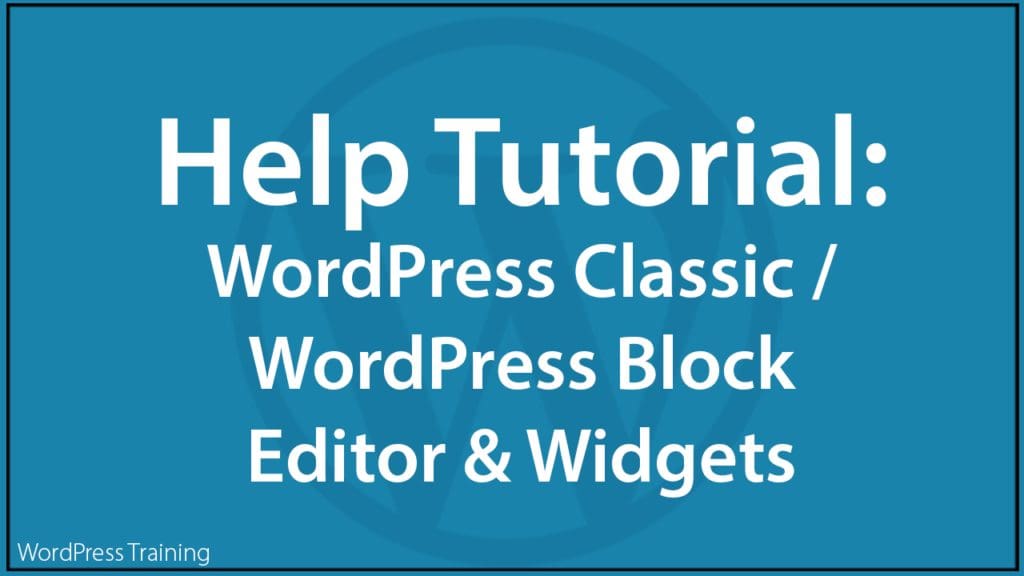Help Tutorial: WordPress Classic vs Block Editor And Widgets
 Are you having trouble finding the Classic Editor or Classic Widgets screen inside your WordPress website admin area? This tutorial will help you get your Classic vs Block issues sorted.
Are you having trouble finding the Classic Editor or Classic Widgets screen inside your WordPress website admin area? This tutorial will help you get your Classic vs Block issues sorted.
If you need additional help with the information presented below, see these tutorials:
- WordPress Classic Editor
- How To Create A Post In WordPress
- How to Create A Page In WordPress
- Using WordPress Widgets
- Using WordPress Plugins
- Using WordPress Themes
- How To Use The WordPress Theme Customizer
- The WordPress Block Editor (Gutenberg)
- How To Use WordPress Blocks
- WordPress Block Themes
- WordPress Site Editor
- How To Manage WordPress Users
- How To Edit Your User Profile
WordPress Classic Editor vs WordPress Blocks Editor
In December 2018, WordPress version 5.0 introduced a new architecture for content creators and web developers called “blocks” (also referred to as Project Gutenberg). Blocks affect everything in the WordPress platform, from creating and editing content to customizing page layouts and themes, web development, website design, and even how WordPress integrates with other software applications and services.
Although necessary for the future growth and development of the WordPress platform, the move toward block-based editing was not without controversy in the WordPress community. As a result, many web developers and WordPress users still prefer using the previous architecture (now referred to as WordPress Classic) on their websites.
As WordPress continues to evolve toward using Blocks for editing content and customizing themes and away from using the Classic Editor, however, you may experience difficulty locating sections like the Classic Editor screen and the Classic Widgets screen in your WordPress dashboard, especially since the introduction of Full Site Editing (FSE) and Block Themes in WordPress Version 5.9.
If so, then just follow the steps shown below. It will help you understand and sort out any issues you may be experiencing.
Let’s start with the basics…
WordPress Classic Interface
This is what the WordPress Classic Editor screen looks like…
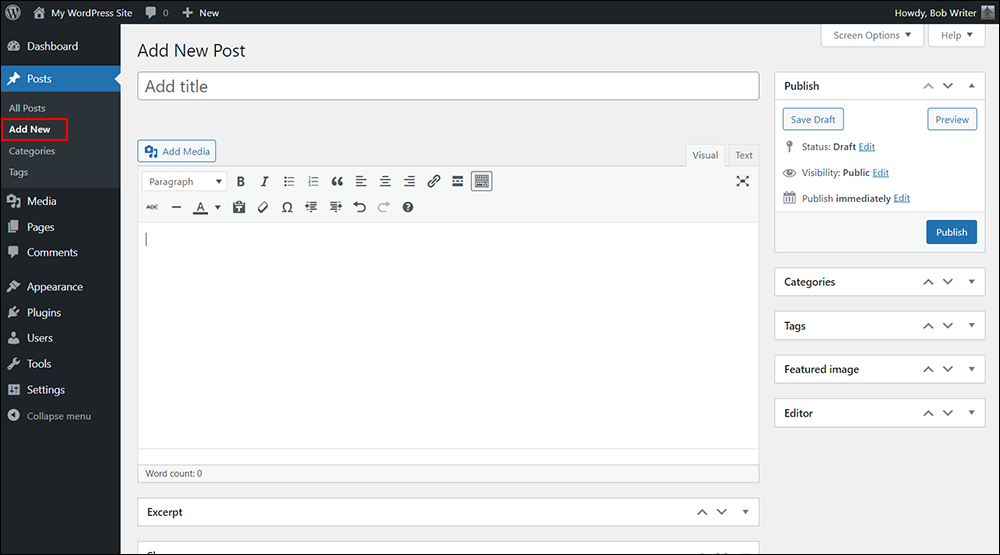
This is what the WordPress Classic Widgets screen looks like…
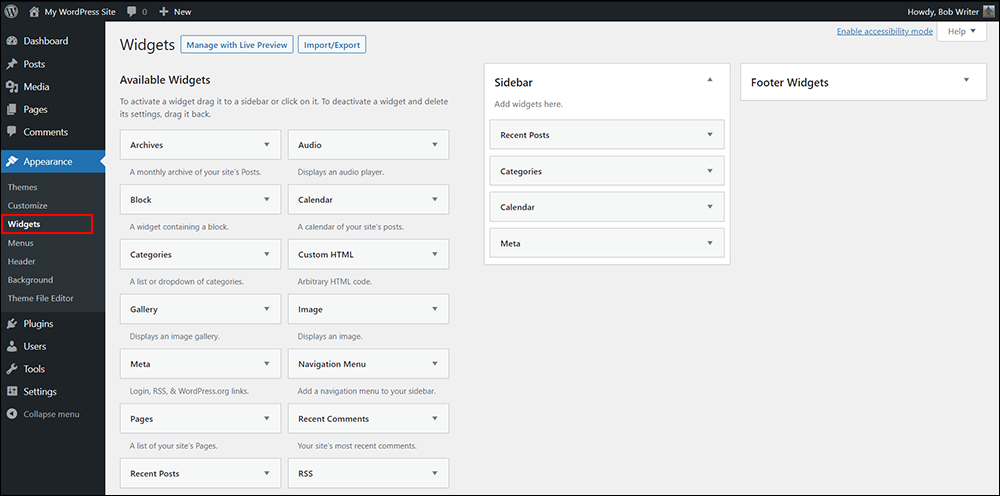
And this is what the Classic Widgets section looks like in the WordPress Theme Customizer…
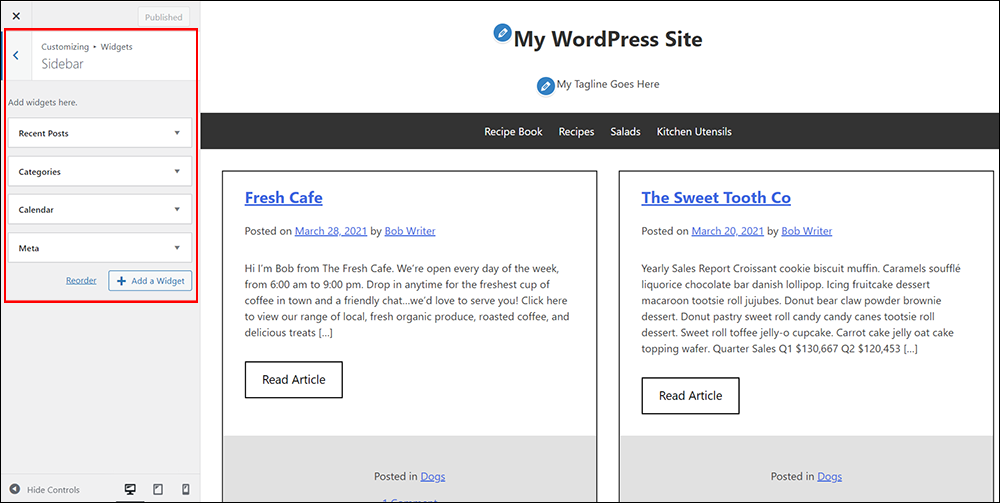
Now, let’s look at the Block interfaces for the same features shown above.
WordPress Blocks Interface
This is what the WordPress Block Editor screen looks like…
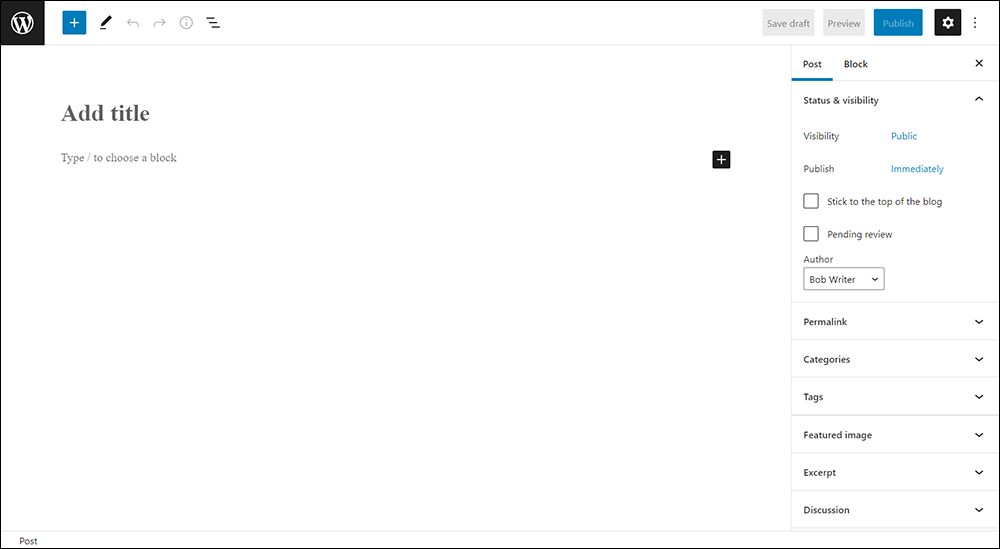
This is what the WordPress Block Widgets screen looks like in the Block Editor…
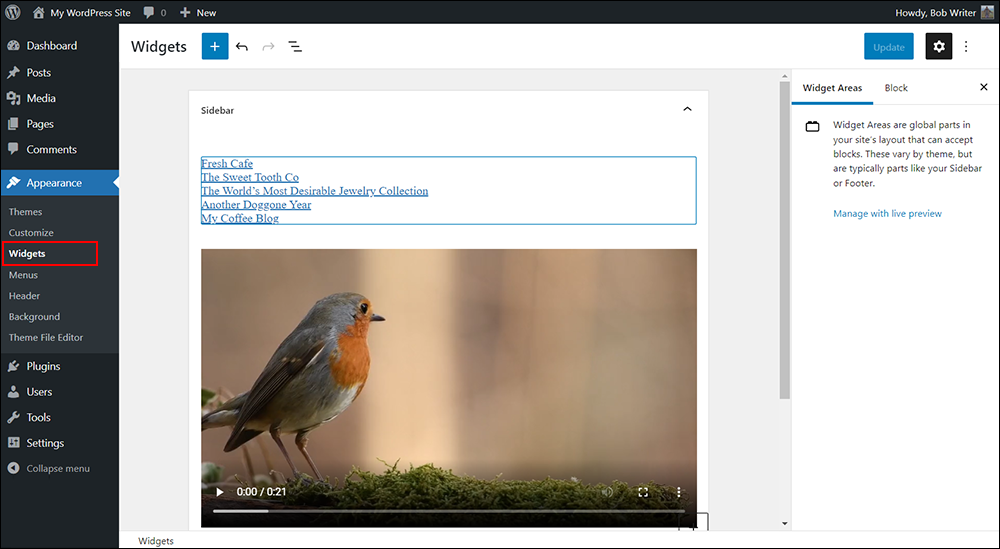
And this is what the Block Widgets section looks like in the WordPress Theme Customizer…
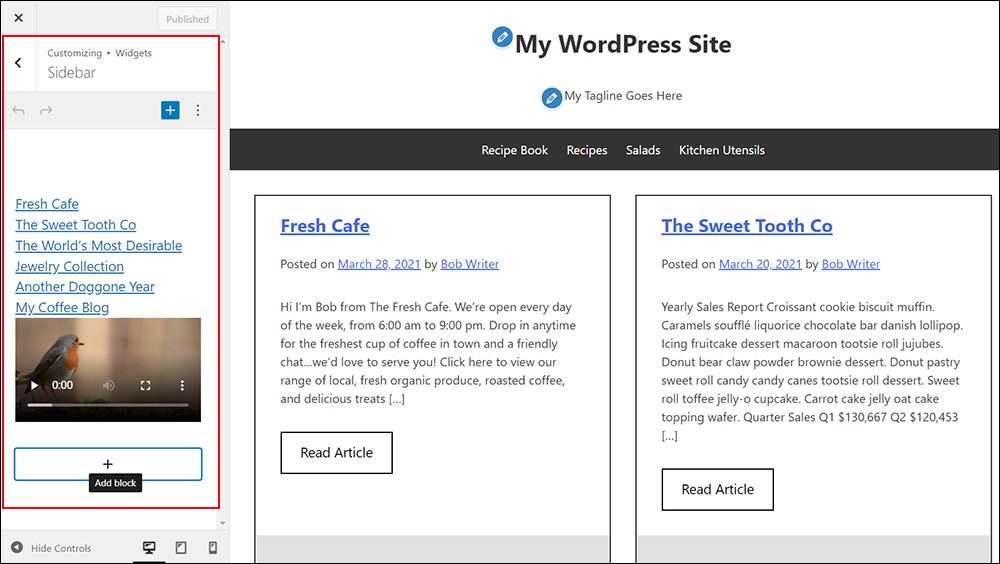
Which Interfaces Are You Seeing…Classic or Block?
Depending on how your WordPress site has been configured, your site will display either the WordPress Classic Editor screen or the WordPress Block Editor screen when you create or edit a new Post or Page.
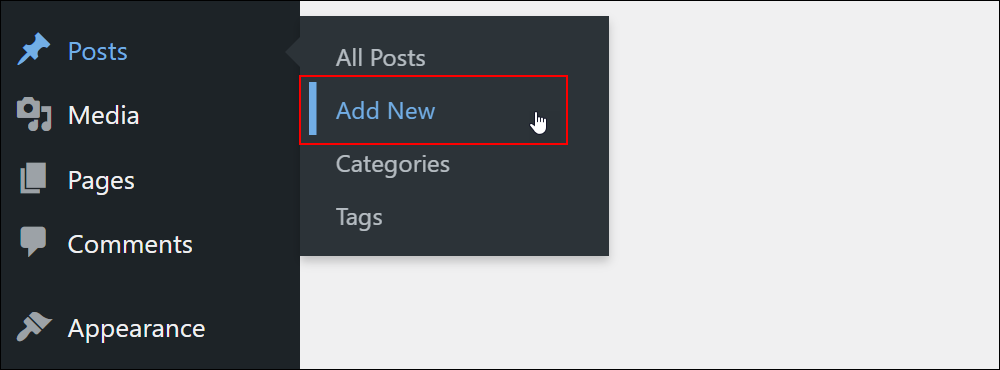
Also, depending on how your site is configured, you may see either the WordPress Classic Widgets screen or the WordPress Block Widgets screen when you access the widgets section via the Appearance > Widgets menu…
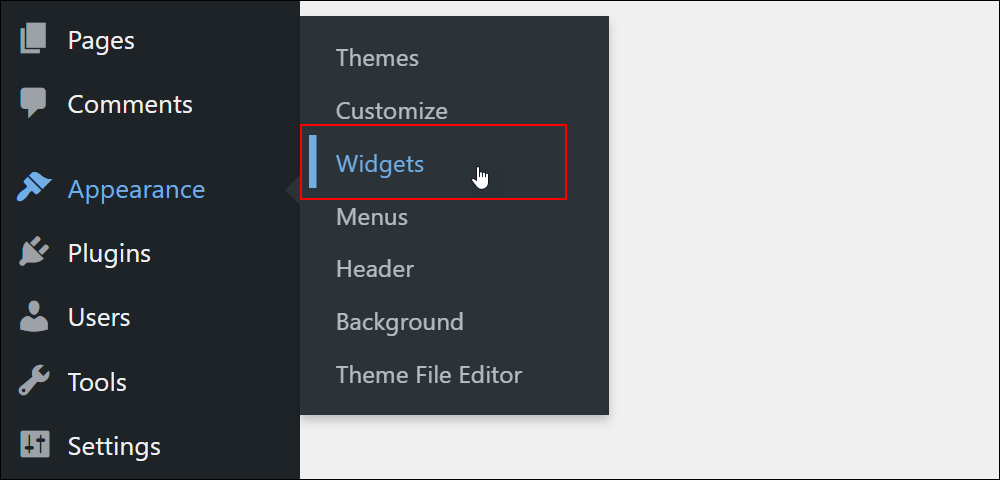
In some instances, however, your site may show the Classic Editor screen when you are creating or editing content on your posts or pages but display the Block Widgets section instead of the Classic Widgets screen when you visit the Widgets section directly, or via the Theme Customizer (by selecting Appearance > Customize on your admin menu) …
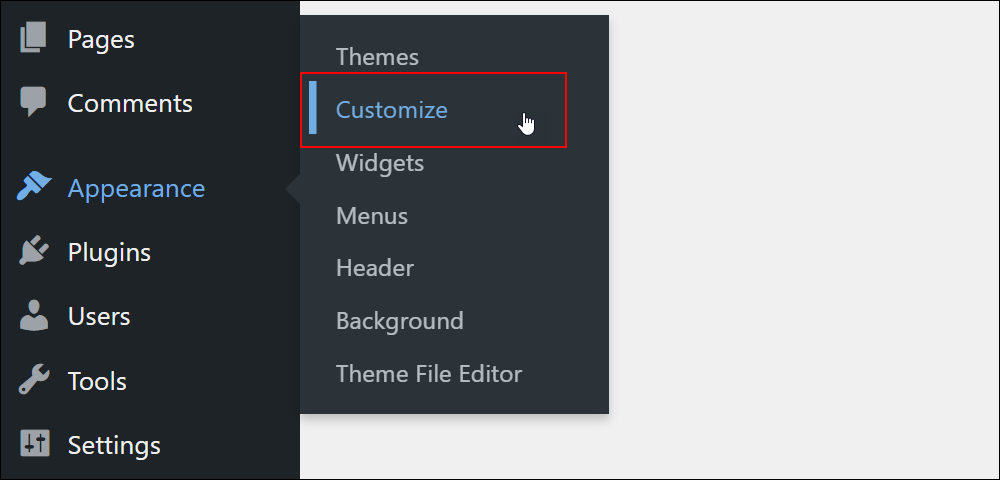
Also, with the introduction of Full Site Editing to WordPress via Block Themes, you may also find that going into the Appearance menu displays neither the Customize nor the Widgets menus on your site …
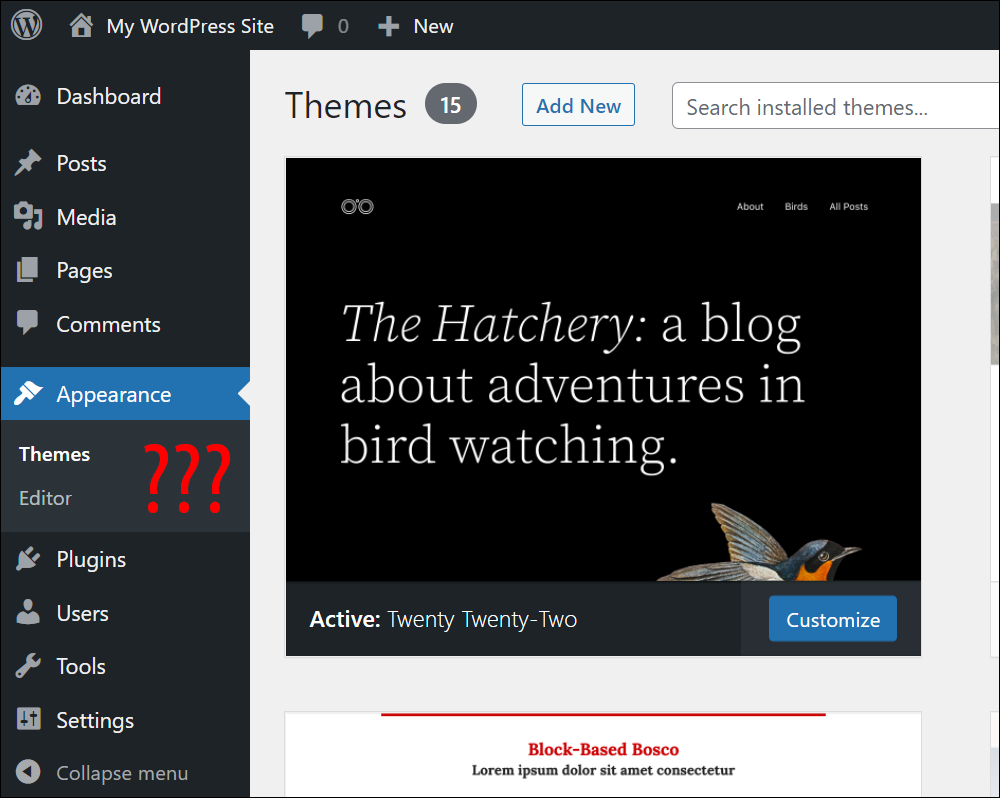
So…if you prefer to use the WordPress Classic interface how can you ensure that “Classic” features of the editor, widgets, and customizer will display on your site instead of block-based features? Also, do you or your site’s users need to switch between using Classic and Block features?
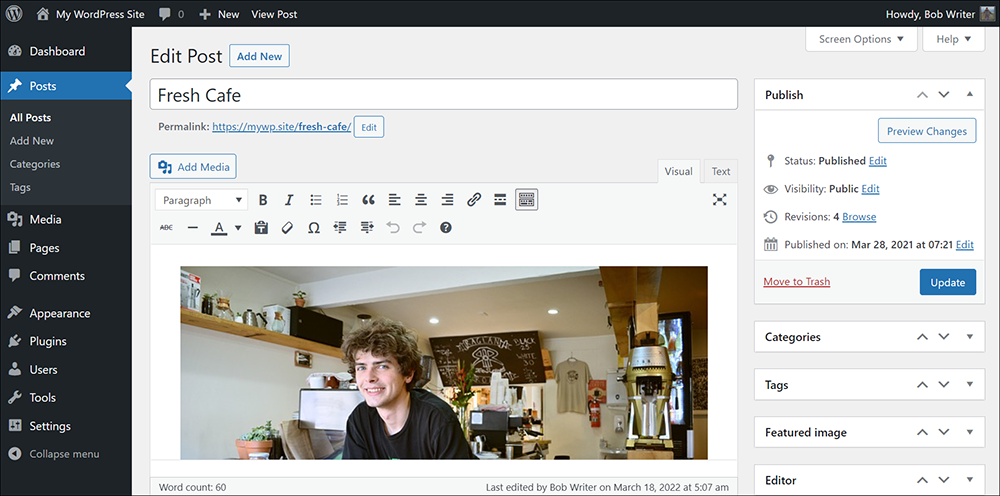
The section below will help you understand and address these questions, and guide you through your options.
WordPress Classic vs Blocks vs FSE – Your Options
Study the diagram below, then choose one of the options listed below the diagram. Depending on how your WordPress site is configured, it will help you sort out what you are trying to achieve and/or resolve the issue you are experiencing.
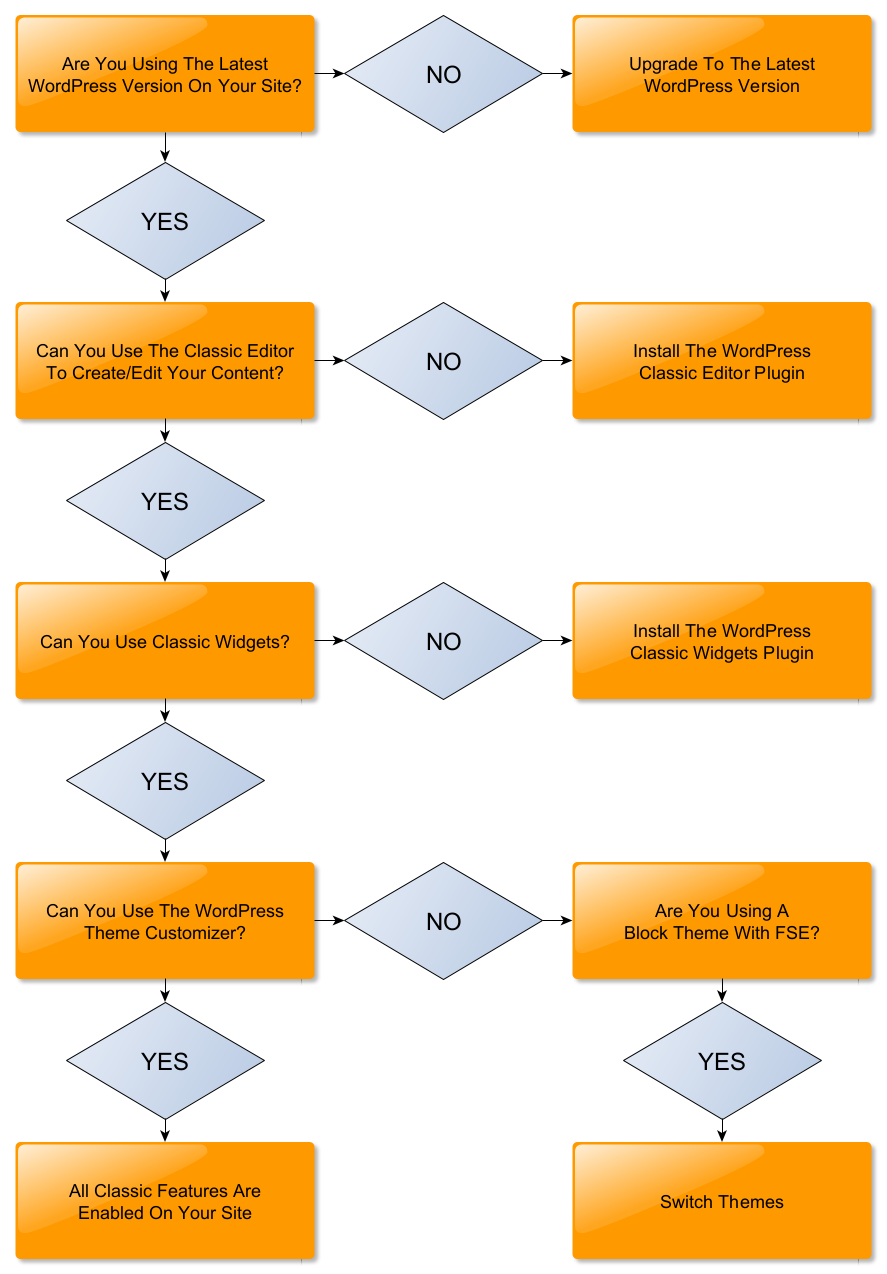
Choose one of the options below:
- I want to use the WordPress Classic Editor but the WordPress Block Editor displays instead.
- I want to use the WordPress Block Editor but the WordPress Classic Editor displays instead.
- I want to use the WordPress Classic Widgets screen but WordPress Block Widgets display instead.
- I want to use WordPress Block Widgets but the WordPress Classic Widgets screen displays instead.
- I can’t see the Widgets or Customize menu.
I want to use the WordPress Classic Editor but the WordPress Block Editor displays instead
Newer WordPress sites automatically default to the WordPress Block (Gutenberg) Editor.
To use the WordPress Classic Editor interface on a WordPress site configured for the Block Editor, you will need to install the WordPress Classic Editor plugin.
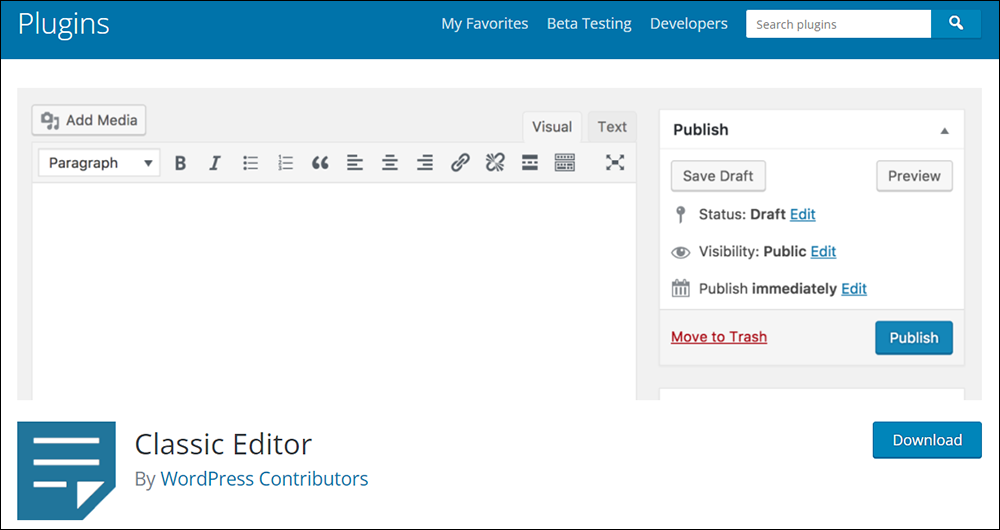
If you need help installing plugins on your site, contact your website developer or see this tutorial for more details: Using WordPress Plugins
I want to use the WordPress Block Editor but the WordPress Classic Editor displays instead
If you’re seeing the WordPress Classic Editor instead of the WordPress Block Editor interface, then either:
- Your site has the WordPress Classic Editor plugin installed and activated.
- Solution: Deactivate the plugin and check if the WordPress Block Editor screen displays instead.
- Your site uses an older WordPress version (i.e. pre-Gutenberg).
- Solution: Upgrade WordPress to the latest version. Note: If you want to access the latest Block features before WordPress officially releases new versions, you can install and activate the WordPress Gutenberg plugin.
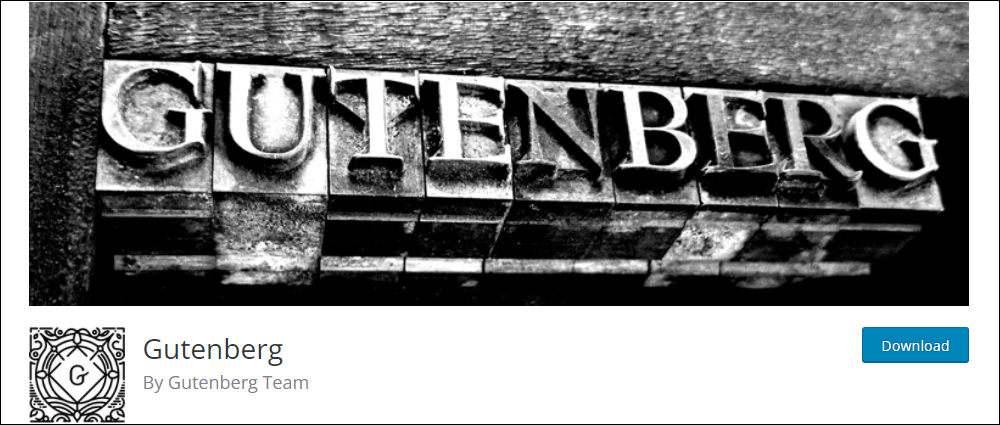
I want to switch between using the WordPress Block Editor and the WordPress Classic Editor
If your site uses the latest version of WordPress and you have the WordPress Classic Editor plugin installed and activated, you can easily switch between the WordPress Block Editor and the WordPress Classic Editor.
First, make sure that the Classic Editor plugin is installed and activated.
If you have an administrator role, you can install and activate the plugin from your WordPress dashboard or check to see if the plugin is installed (and activated) in the Plugins section.
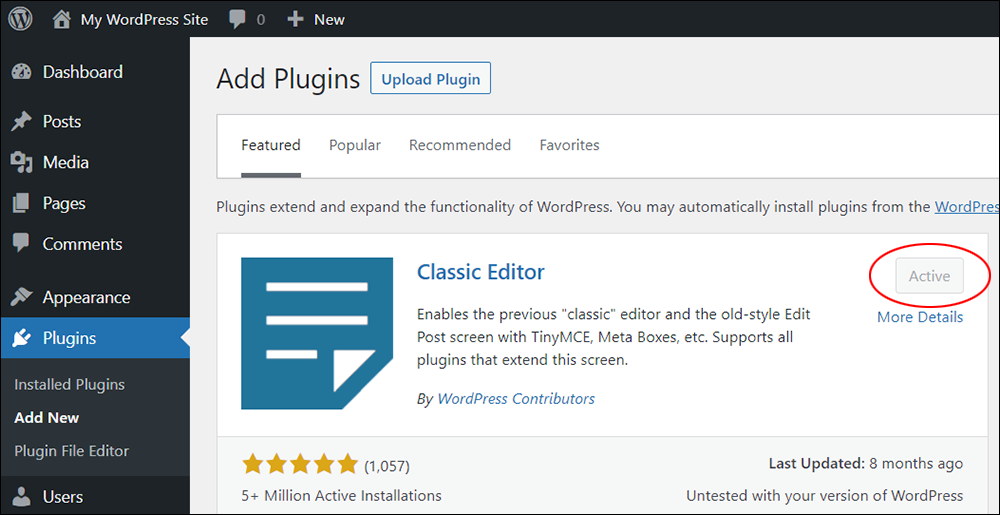
Next, go to your user profile section (Users > Profile).
WordPress lets users set which editor they prefer to use based on their user profiles.
Set your preferred default editor under Users > Profile > Personal Options > Default Editor.

Finally, go to Settings > Writing, and do the following (you must be a site administrator to see these options):
- Default editor for all users – Select either the Classic editor or Block editor option as the default.
- Allow users to switch editors – Select Yes to give users on your site the option of switching editors or No if you want all users on your site to access only the default editor you have specified in the Default editor for all users section.
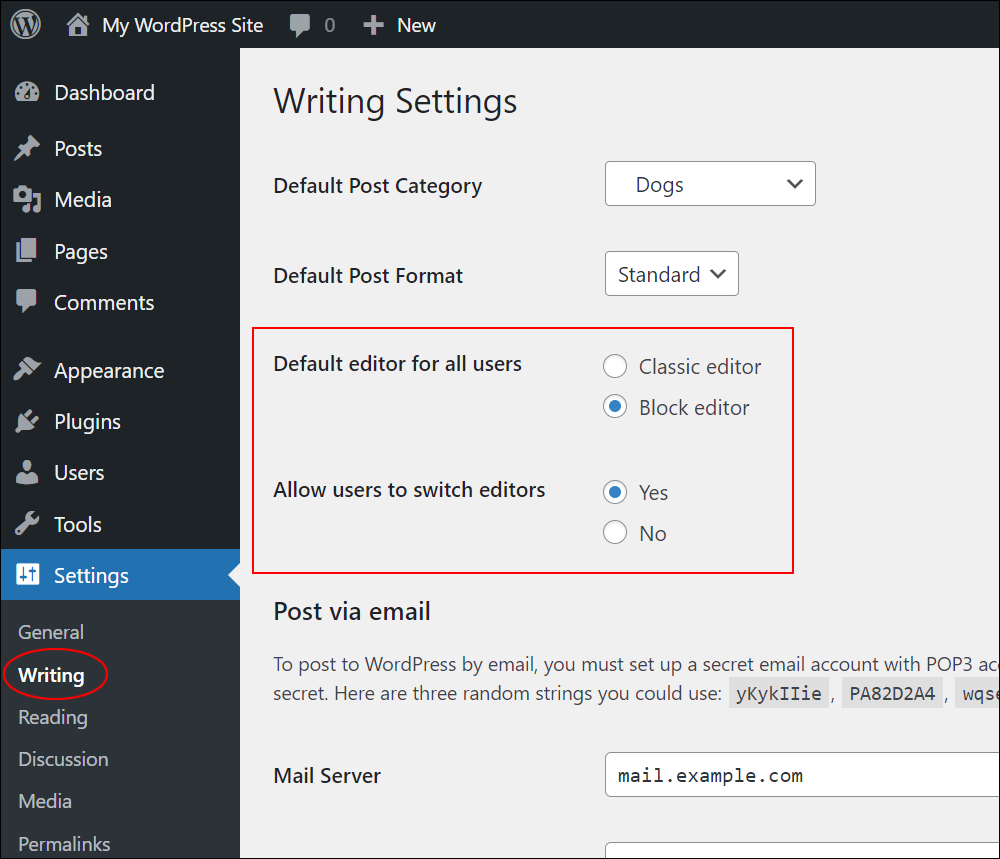
If you (or the site admin) have allowed all users to switch editors, then users working on a post or page inside the Block Editor can switch to the classic editor by clicking on Plugins > Switch to classic editor inside their Options panel.
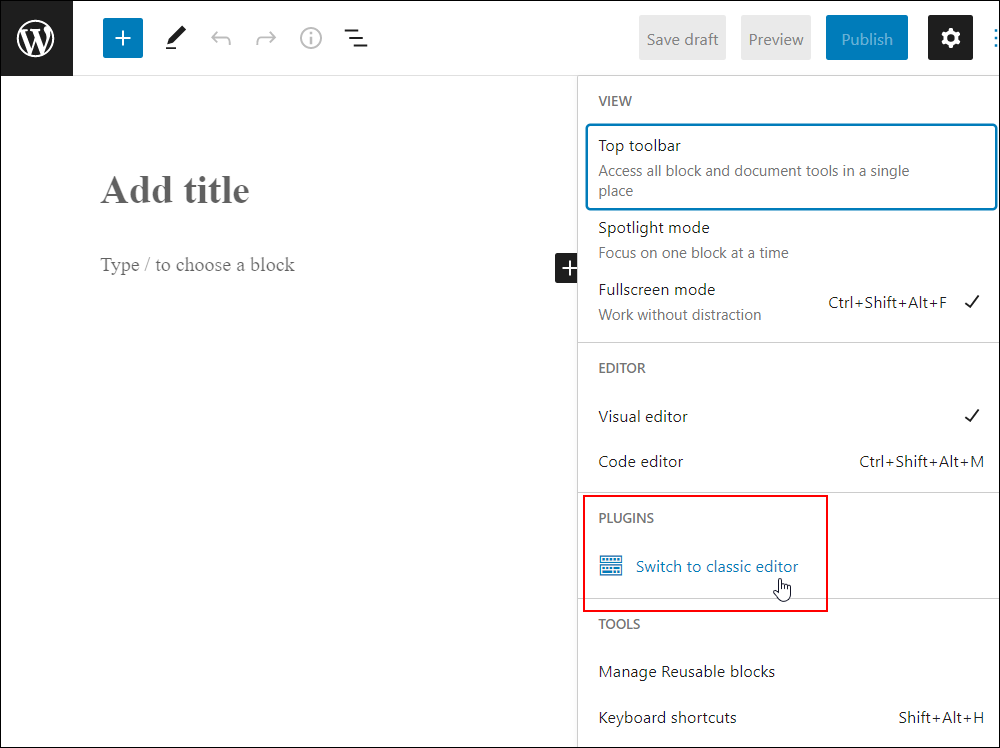
Likewise, users working on a post or page inside the Classic Editor can switch to the Block editor by clicking on the Switch to block editor link in the Editor panel inside their post or page settings area.
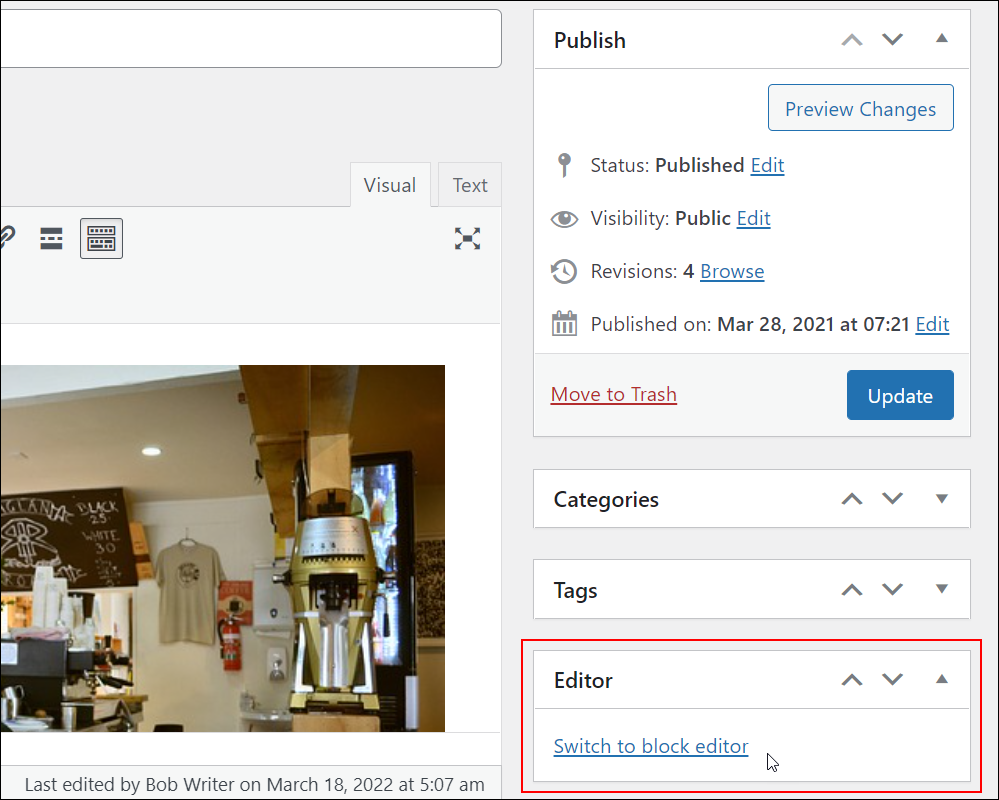
You can also see which posts or pages were created using the Classic or Block editor from your Posts or Pages screen.
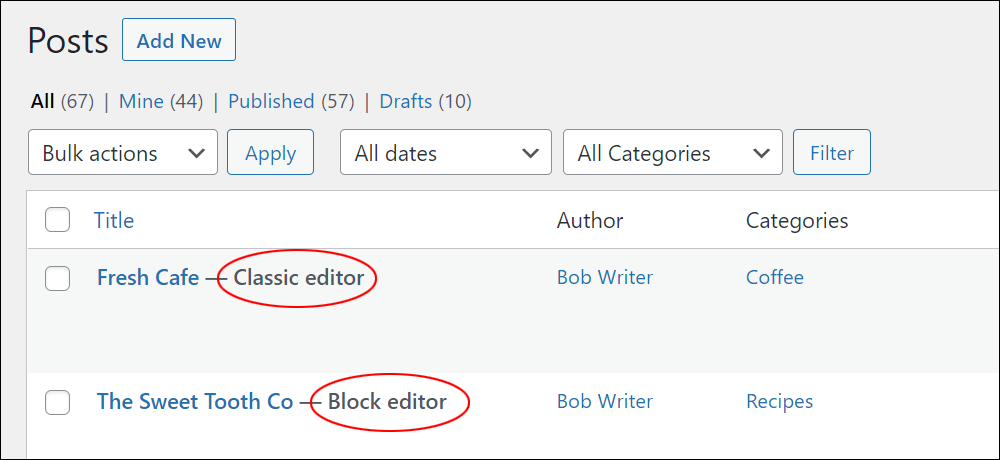
Additionally, you will also have the option to edit any post or page on your site using either the Block or Classic editor.
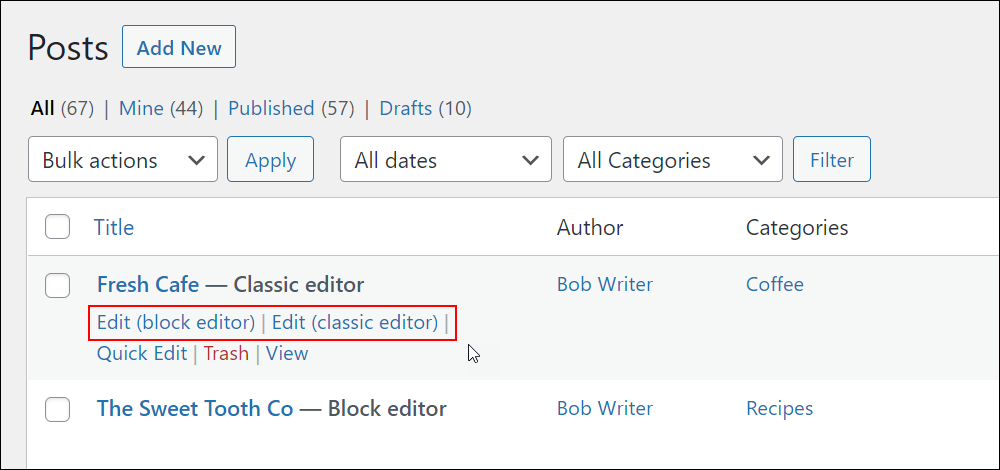
Note: As stated on the official plugin page:
It’s important to note that “each post opens in the last editor used regardless of who edited it last. This is important for maintaining a consistent experience when editing content.”
To learn more about editing posts or pages, see the tutorials below:
- How To Edit and Delete Posts In WordPress
- How To Edit and Delete Pages In WordPress
- How To Use The WordPress Quick Edit Feature
I want to use the WordPress Classic Widgets screen but WordPress Block Widgets display instead
Newer WordPress sites automatically default to WordPress Block Widgets.
To use the WordPress Classic Widgets screen, you will need to install the WordPress Classic Widgets plugin.

If you need help installing plugins on your site, contact your website developer or see this tutorial for more details: Using WordPress Plugins
I want to use WordPress Block Widgets but the WordPress Classic Widgets screen displays instead
If you’re seeing the WordPress Classic Widgets screen instead of the WordPress Block Widgets interface, then either:
- Your site has the WordPress Classic Widgets plugin installed and activated.
- Solution: Deactivate the plugin and check if the WordPress Block Widgets screen displays instead.
- Your site uses an older WordPress version (i.e. pre-Gutenberg).
- Solution: Upgrade WordPress to the latest version.
I can’t see the Widgets or Customize menu
As mentioned earlier, you may find that the Customize and Widgets menus have disappeared from the Appearance menu on your site …

The reason for this is the introduction of Full Site Editing to WordPress via Block Themes and the WordPress Site Editor since version 5.9 makes features like the Theme Customizer and Widgets no longer necessary, as you can now simply use blocks instead.
If you want to use features like the Theme Customizer and widgets on your site, then you will need to switch from using a Block Theme on your site with Full Site Editing features (FSE) to a theme built using a pre-FSE architecture.
To do this, go to Appearance > Themes…
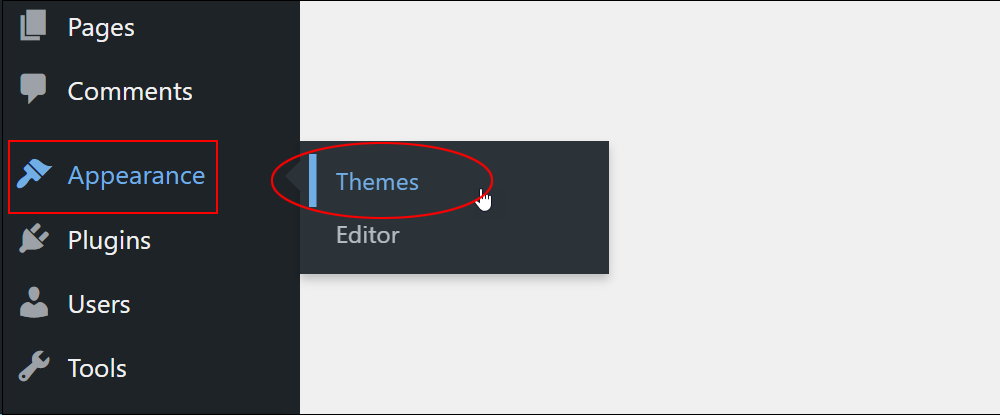
The Themes screen lets you view, install, delete, and switch themes.
Switching to a non-FSE theme should now change your Appearance menu from this…
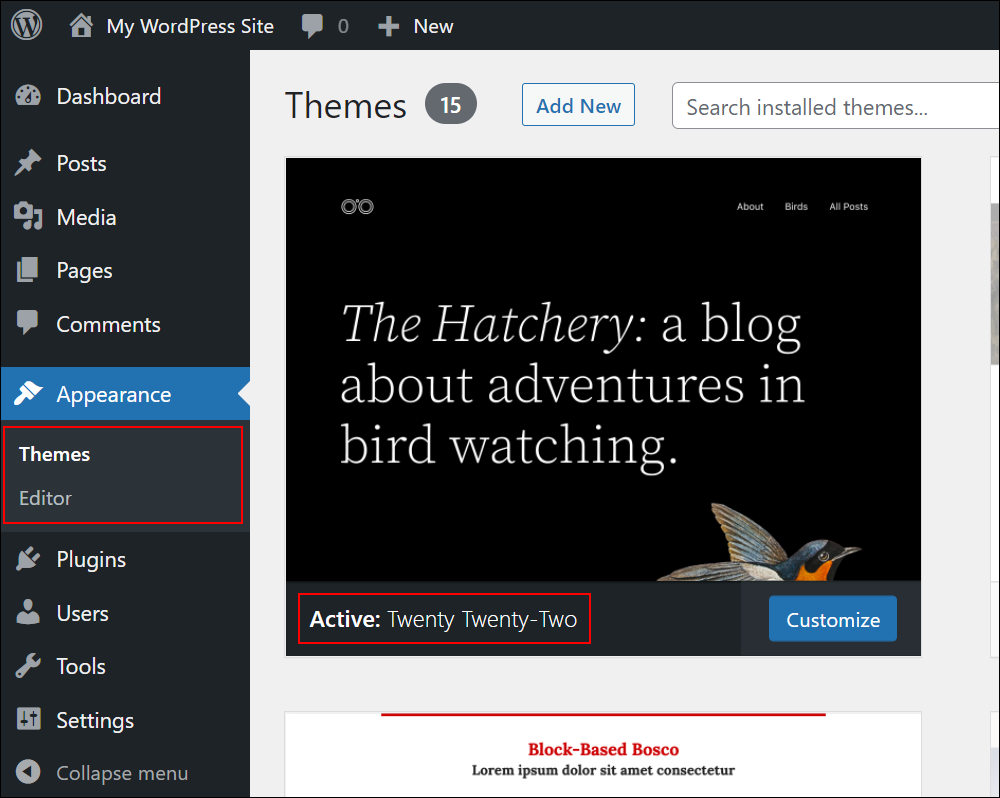
To this…
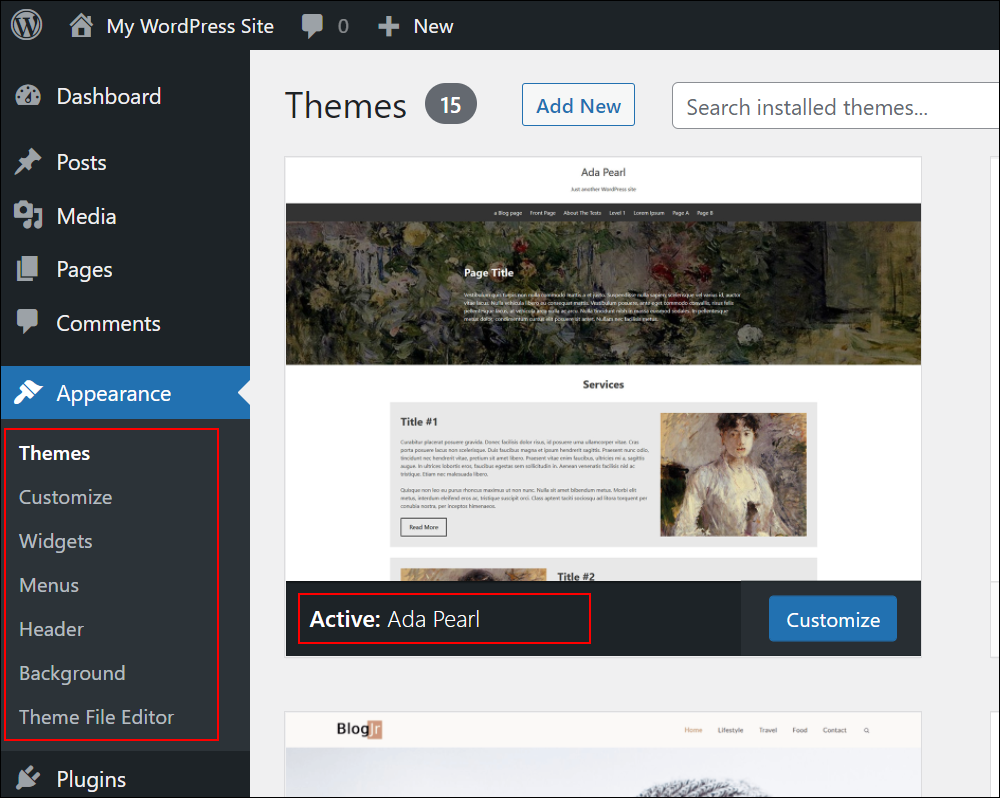
Important: Please discuss with your website developer before changing themes. WordPress makes it easy to switch themes but you could lose any existing customizations made to your site by switching themes.
For more information on WordPress themes, see these tutorials:
Additional Notes
Depending on how your WordPress site has been built and configured, you may also see a completely different interface when you try to create or edit a page or find that items or sections are missing from your menus.
This can happen if your site uses page builders, if your website developer has customized your administration area (and hidden certain elements from view), or even if you have been assigned a user role that prevents you from accessing certain features on your site.
We hope that you have found this tutorial helpful. If the above hasn’t addressed what you were hoping to solve, contact your website developer or refer to our additional tutorials and resources for help.
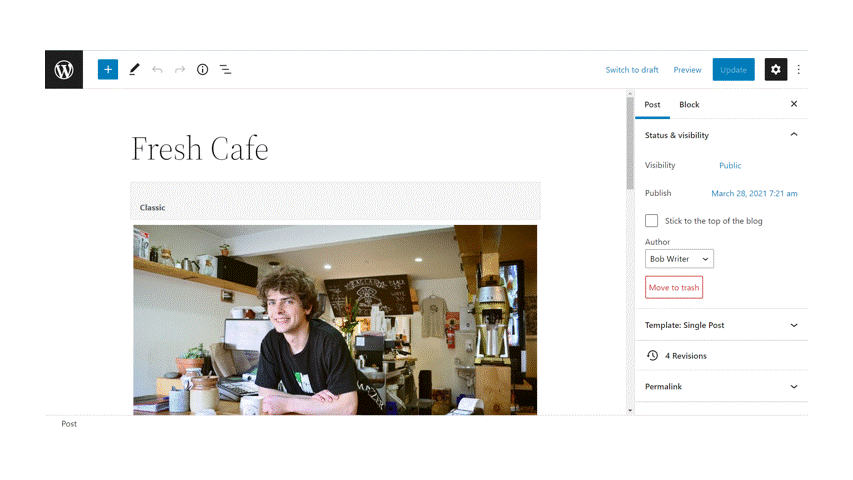
***
Updated: July 5th, 2024
